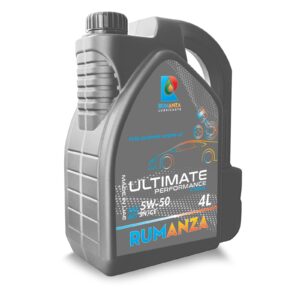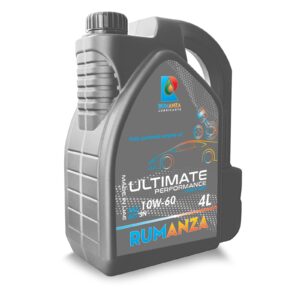Mono Ethylene Glycol: Because Your Engine Deserves the Best
Rumanza Mono Ethylene Glycol
Mono Ethylene Glycol: The Secret to a Longer-Lasting Engine

Rumanza Mono Ethylene Glycol: A Comprehensive Guide to the Automotive Chemical
Rumanza Mono Ethylene Glycol is a type of ethylene glycol (EG) that is widely used in various industries, including automotive. It is a clear, colorless, and odorless liquid with a slightly sweet taste. MEG is a synthetic chemical compound, derived from the reaction of ethylene oxide with water.
Mono Ethylene Glycol Benefits
Antifreeze properties
MEG is capable of lowering the freezing point of water, making it an effective antifreeze agent in cooling systems. This prevents damage caused by freezing temperatures, ensuring that your engine remains protected throughout the year.
Boiling point elevation
MEG raises the boiling point of water, preventing overheating and reducing the risk of damage to your engine’s components.
Corrosion inhibition
MEG has excellent corrosion inhibition properties, which help prevent damage to metal components in the cooling system.
Low viscosity
MEG has a low viscosity, making it easy to flow through narrow passages and hoses, reducing the risk of blockages and ensuring smooth engine operation.
Biodegradable
MEG is biodegradable, making it an environmentally friendly option for automotive applications.
Years
0
Countries
0
Products
0
Annual Blending Capacity
0
K MT
Mono Ethylene Glycol Uses in Automotive Applications
Coolant
MEG is used as a coolant in radiators, engine blocks, and cylinder heads to prevent overheating and damage.
Brake fluid
MEG is used as a base fluid in brake fluid formulations, providing excellent lubricity and corrosion inhibition properties.
Power steering fluid
MEG is used as a base fluid in power steering fluid formulations, offering excellent lubricity and corrosion inhibition properties.
Automotive paint
MEG is used as a solvent in automotive paint formulations, providing excellent cleaning and degreasing properties.
Comparison with Other Antifreeze Agents
Rumanza Mono Ethylene Glycol is often compared to other antifreeze agents, such as propylene glycol (PG) and diethylene glycol (DEG). While PG has similar properties to MEG, it is less effective as an antifreeze agent and has a higher toxicity level. DEG is more toxic than MEG and has a higher boiling point elevation, making it less suitable for automotive applications.


Mono Ethylene Glycol: The Secret to a Longer-Lasting Engine
Rumanza Mono Ethylene Glycol is a versatile chemical that plays a crucial role in various automotive applications. Its antifreeze properties, boiling point elevation, corrosion inhibition properties, low viscosity, and biodegradability make it an ideal choice for maintaining your vehicle’s engine and cooling system. By understanding the properties and benefits of MEG, you can ensure optimal performance and longevity of your vehicle. Remember to follow proper safety precautions when handling this chemical to ensure a safe and successful repair experience.
Discover Latest Rumanza Agriculture Oils Products
Drive Safe, Drive Cool – Use Rumanza Mono Ethylene Glycol
The importance of Mono Ethylene Glycol (MEG) in the automotive industry has become increasingly crucial due to several key factors. As emissions regulations tighten, the need for more efficient and eco-friendly vehicles has grown, making advanced cooling systems with MEG a vital component. Additionally, the rising demand for electric vehicles has created a need for advanced cooling systems that can prevent overheating and ensure optimal performance, and MEG is essential in meeting these demands. Furthermore, the automotive industry is shifting its focus towards sustainability, and MEG plays a key role in reducing waste and environmental impact by being biodegradable and non-toxic. Overall, the use of MEG in automotive chemicals is becoming increasingly important as the industry prioritizes sustainability and eco-friendliness.

-

Rumanza Xtreme
$1,000.00 This product has multiple variants. The options may be chosen on the product page -

Rumanza 4T
$1,000.00 This product has multiple variants. The options may be chosen on the product page -

Rumanza Xrace Pro
$1,000.00 This product has multiple variants. The options may be chosen on the product page -

RUMANZA Accel-VX Diesel Engine Oil
$1,000.00 This product has multiple variants. The options may be chosen on the product page
Frequently Asked Questions (FAQs)
The primary use of MEG in automotive applications is as an antifreeze agent in cooling systems. It helps prevent damage caused by freezing temperatures and overheating.
Yes, MEG is generally safe to use when handled properly. However, it is essential to follow proper safety precautions, such as wearing protective gear and handling it with care.
No, MEG should not be used in all cooling systems. It is recommended to check the manufacturer’s specifications before using MEG in your vehicle’s cooling system.
MEG is more effective than propylene glycol (PG) as an antifreeze agent, but less toxic than diethylene glycol (DEG). PG has a lower boiling point elevation than MEG, making it less suitable for high-temperature applications.
It is generally not recommended to mix MEG with other chemicals without proper testing and approval. Mixing MEG with other chemicals can lead to unpredictable results and potentially damage your vehicle’s engine.